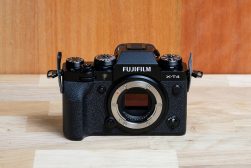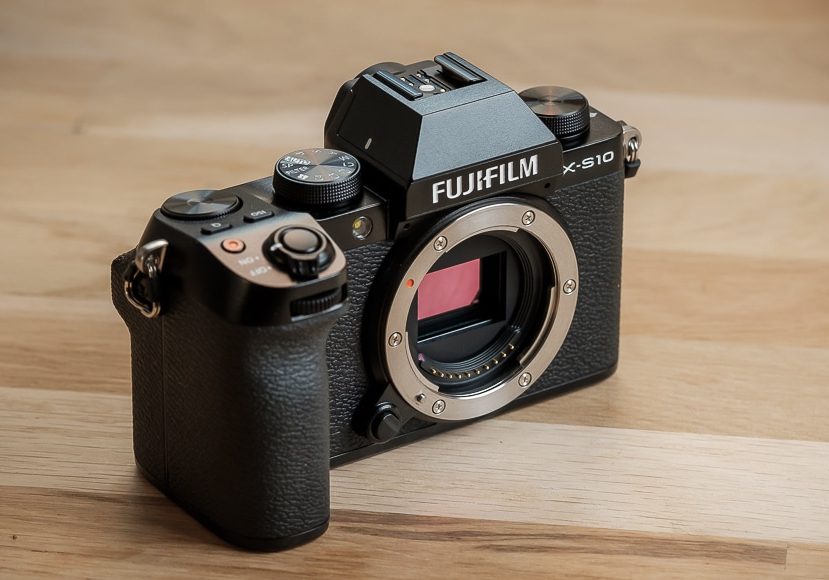
Fujifilm X-S10 Review
The odd-looking Fujifilm X-S10 is a sleek and versatile mirrorless camera packed with cutting-edge tech that wows in both photo and video performance!
2020 was a very odd year to say the least, with the photography industry impacted as most others have. And for the most part, Fujifilm has been understandably a little quiet on the new camera front.
However, despite the cancelled Olympics, a global pandemic, bushfires, economic downfalls and political turmoil all over the world, Fujifilm decided to release a brand new camera.
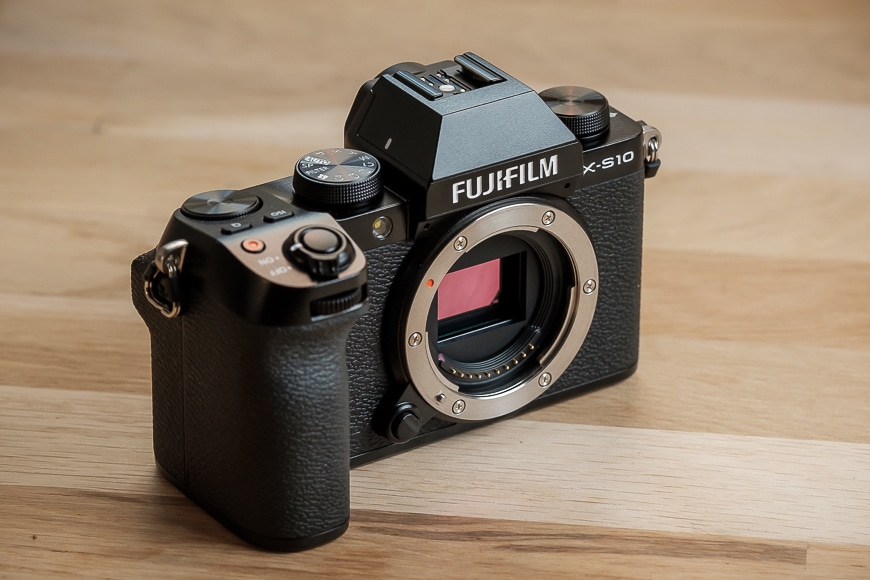
Small, sleek and versatile mirrorless camera packed with cutting-edge tech that wows in both photo and video performance.
Despite their history of developing great mirrorless cameras that delight photographers, I was a little hesitant to applaud when I first laid eyes on the Fujifilm X-S10.
And perhaps due to their heritage of creating retro-inspired cameras, I was both intrigued and a little put off by its looks, clashing with my long-held view that Fuji develops the best-looking cameras on the market.
But before we get into my journey with this camera, it’s worth pointing out that the X-S10 houses some awe-inspiring tech. This release marks a new step forward in mirrorless camera tech squished into a small body that is around the size of a Fuji X-T30.
And while the X-S10 is not a flagship body, it certainly packs flagship qualities and a raft of features that will make enthusiasts think twice.
Let’s take a closer look at the all-new Fujifilm X-S10 and discover why I fell in love with this ugly duckling.
Fujifilm X-S10 Specs
- THE GRIP!
- Ideal for videography
- IBIS
- 18 Film Simulations
- The price
- Still not a fan of the fold-out screen
- No weather sealing
- Effective Pixels: 26.1 megapixel
- Sensor: X-Trans CMOS 4 sensor with a primary colour filter
- ISO Sensitivity: 80 – 51200
- IBIS: Image sensor shift mechanism with 5-axis compensation
- FPS: 20fps (30fps in Sports Mode)
- Viewfinder: 0.39 inch approx. 2.36 million dots OLED Color Viewfinder
- LCD Monitor: 3.0 inch, aspect ratio 3:2, approx. 1.04 million dots touch screen colour LCD monitor(approx. 100% coverage)
- Film Simulations: 18 modes
- Video: DCI 4K(4096×2160) at 29.97p/25p/24p/23.98p 200Mbps/100Mbps up to approx. 30min
- Dimensions: (W) 126.0mm × (H) 85.1mm × (D) 65.4mm (minimum depth 32.9mm)
- Weight: Approx. 465g (including battery and SD memory card)
- Battery: NP-W126S Li-ion – Approx. 325 frames
Build & Appearance
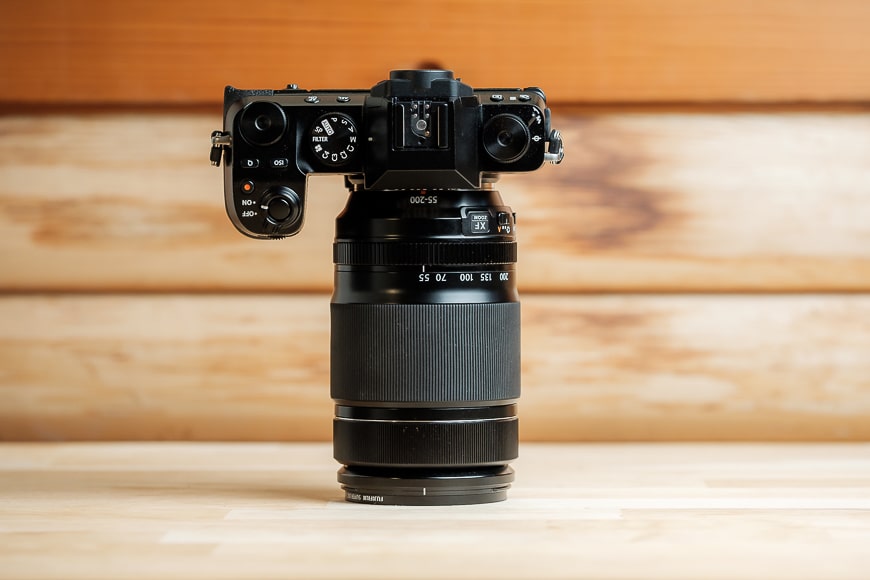
The Fujifilm X-S10 is just as comfortable with a little prime as it is with a larger zoom.
So let’s cut to the chase – I did NOT like the look of the Fujifilm X-S10 when shown to me.
I had just started to eat a rather tasty doughnut – you know the kind with the pink icing and sprinkles on top. And these were not your usual teeny tiny sprinkles. These were bigger and more flavour packed. Anyway, the sprinkles were only on half the doughnut icing, which I appreciate as…Sorry I got distracted and started reviewing a doughnut.
Anyway, needless to say, I had to stop, put my doughnut down, and look twice at the X-S10 as this looked nothing like a retro-inspired Fujifilm camera.
At first, the X-S10 looked like a moc-up that someone had slapped together in their workshop. Had someone combined a Fuji X-T30 with the sawn-off grip from the old X-H1?!
I was not impressed – but for the sake of being fair, let’s take a look at each of the critical build-elements of this camera.
As mentioned, the camera is around the same size and shape as the Fujifilm X-T30 with its minimal, retro design. The most significant difference is that this has a large and deep grip that protrudes from the body at a right angle.
The grip house the standard NP-W126S battery and memory card – accessed via a door at the base of the grip. The other side of the body has two small flip-out panels with USB-C, HDMI micro ports and a 3.5mm Mic jack.
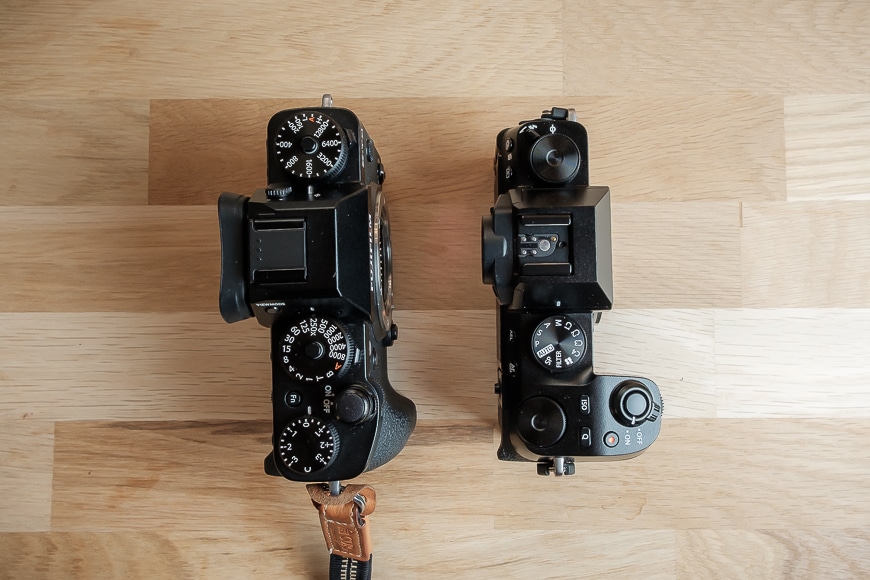
The Fujifilm X-S10 (right) with its protruding grip compared to the X-T3 (left).
The front of the camera is home to the gorgeous metal X-Mount just waiting for all that fantastic Fuji glass to be attached.
Aside from that, the front of the body is minimal and typical of the X series – although it is worth noting that the Focus select toggle is now gone.
The back of the X-S10 is just as minimal. There are four function buttons across the top of the camera and the Menu and Disp/Back button inset into the back of the grip. There is also the little toggle stick that allows you to navigate menus and also select focus points.
The display screen is well worth discussing as it also hints at what this camera would be great for.
The screen is a big bright 3.0 inch, 1.04 million dots touch screen colour LCD monitor with approximately 100% coverage. But aside from those numbers, it flips out to the side 180 degrees on its horizontal axis and can rotate around 270 degrees.

The LCD on the Fujifilm X-S10 is fully articulating making it perfect for video and vlogging
As a result, you have a wide range of shooting styles available to you for both stills and video.
You can shoot from the hip with the screen out and angled up – although this is a little awkward to have the screen hanging out.
If you’re a vlogger, you can hold the Fujifilm X-S10 facing your gorgeous Insta-worthy mug and still see the spinach between your teeth on the screen. Or, you can fold the screen shut with the screen monitor facing out or in.
However if you have your camera tethered to a computer or external monitor via the HDMI port, you can’t rotate the flip-out camera very far.
The ‘mirror box’ that sits atop the camera has a 0.39 inch OLED screen with approximately 2.36 million dots – excellent optics.
It also has the diopter dial and is home to both a pop-up flash and a hot shoe – the best of both worlds depending on how serious you want to get.
The top plate of the camera is home to three control dials, including the primary control for camera modes and custom modes.
In a break from tradition, two control dials are free of the usual ISO/Exposure Control markings – they are entirely blank. The top of the grip features a dial recessed into the camera body – the rear is exposed for easy control with your thumb.
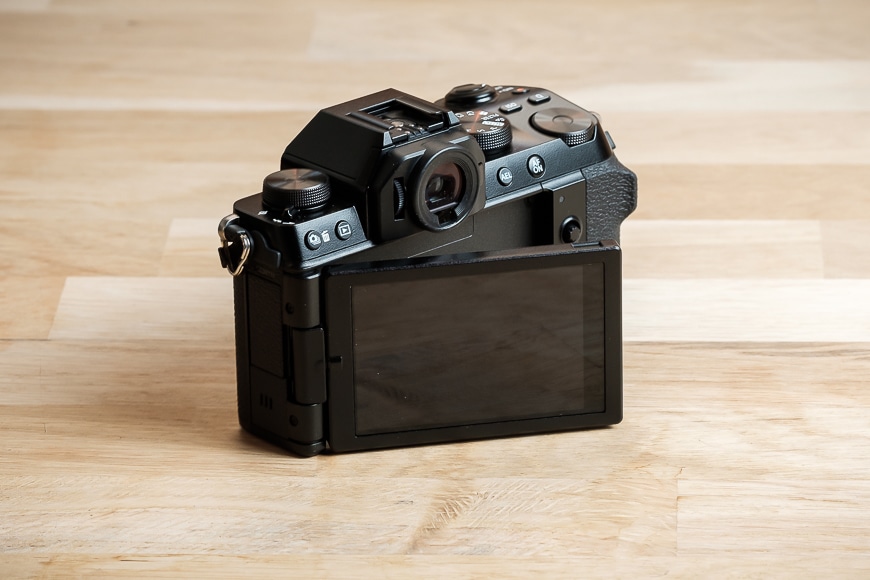
While minimal, the X-S10 provides access to fully customisable controls.
The grip also houses small ISO and Q buttons. There is also a video record button and a large On/Off switch that also houses a recessed shutter button.
The shutter button is clicky and responsive but has no screw thread. Tucked away in front of the grip is a control wheel that can be assigned to a function.
Aside from the details, the Fujifilm X-S10 is very well built and makes for a reliable camera – however it’s worth mentioning that there’s no weather sealing on this one.
Ergonomics & Handling

That GRIP!
While I’ve described the build of the camera as well as a rather tasty doughnut, I have not discussed the handling. And this is where my opinion of the ugly duckling starts to take on beautiful swan-like appeal.
You see, to look at the Fujifilm X-S10 takes a little while to get used to – especially if all you’ve ever shot with are the X-T and X-Pro lines. But when you pick you the X-S10 and wrap your hand around the deep grip, your whole world changes.
While I love the look of them, the X-T lines have always made me a little nervous as they were mostly void of any grip. At least nothing that would invoke confidence and as a result, I always wear a wrist strap with my Fuji cameras.
With the X-S10, you have nothing to fear as the deepness of the grip, the textured surface and the thumb rest all combine to give you a sure grasp.
And this is where my view of the X-S10 changed. It suddenly made sense, and my initial repulsion at the look of the camera evaporated and left a feeling of security and respect.
My feeling was elevated once I started attaching some bigger lenses onto the body – I had greater control and enhanced stability thanks to the grip.
I could imagine how much more control a videographer would have capturing stable footage too. Plus, vloggers have more to hang on to while they have the camera reversed with the flip screen out.
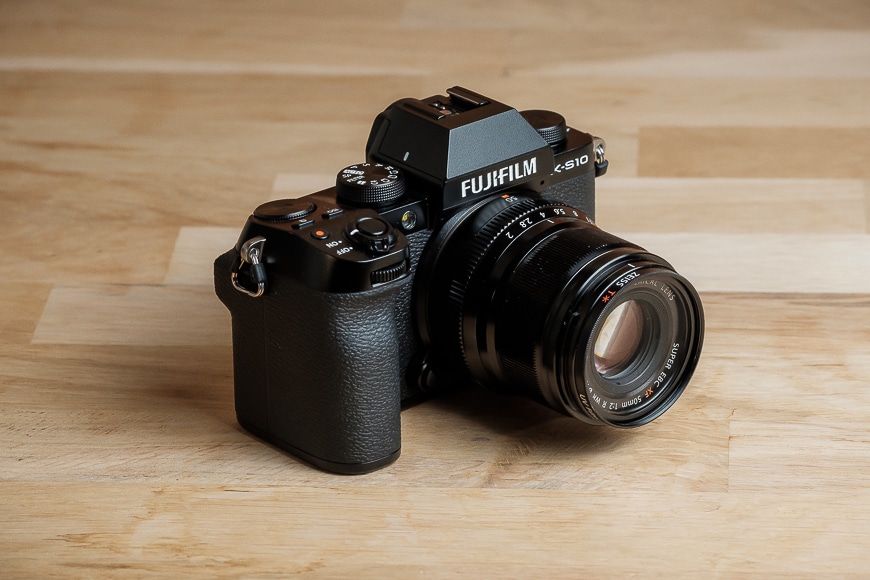
The Fujifilm X-S10 with a smaller 50mm f/2 prime makes for a neat and light kit
Aside from the grip, the ergonomics of the X-S10 are very familiar with optimal button placement and access to command dials – all of which are customisable.
The touch screen interface provides direct access to all menu functions as well as focus and shooting control.
The menu is also very familiar, and for those that are new to Fuji, it’s easy to understand and well organised – not all brands can boast that.
With the main control dial, you can access all of your pre-built custom shooting modes or jump right into the familiar ones, including Auto. Or, for those that love the joy of honest shooting, go full manual and learn how to use a camera the right way.
Focus Performance

The AF on the Fujifilm X-S10 is fast and sharp
The Fujifilm X-S10, much like all the cameras in the X-T range, has fantastic focus performance in all situations.
I found the camera to be super quick and responsive, even when shooting street photography on the go. The Intelligent Hybrid AF system (TTL contrast AF / TTL phase-detection AF) kicks in and does its thing incredibly well and consistently.
The camera features Single AF, Continuous AF and MF modes plus a range of tracking and frame select options. These include Single-point AF and Zone AF – both of which have scalable selection sizes.
When it comes to tracking, the Fujifilm X-S10 is no slouch with its excellent continuous tracking, including face and eye detection to lock onto your subject with ease.
Focusing is speedy, sharp and the tracking modes are sticky – meaning you’ll hold focus on your subject – much like the doughnut.
Also worth mentioning that the X-S10 features an all-new image sensor shift mechanism with 5-axis compensation – IBIS or In Body Image Stabilisation, in other words.
The nerds at Fuji have developed and installed IBIS into a tiny body, and I hope that they use this in all future models of Fuji cameras.
Low Light Performance

Even in low light, the Fuji X-S10 makes me look adorable!
The Fujifilm X-S10 performs well in low light thanks to the brilliant X-Trans CMOS 4 sensor and an extended ISO range of 80 to 51,200.
Of course, I always like to point out that low light performance is a combination of the camera and the lens. A lens with a wide aperture is going to perform better than one with a narrow aperture.
I had no issue dialling up the ISO to compensate for indoor shooting, and the image quality was excellent. Noticeable noise was easily managed in post-production – which is why you should always shoot in RAW people.
Plus, the X-S10, despite its size, also houses a unique in-body image stabilisation system. The image sensor shift mechanism features 5-axis compensation that allows for up to 6.0 stops of light. Drop a fast IS lens on this bad boy, and you’ll turn night into day!
Image Quality

The Fujifilm X-S10 captures all that natural colour, texture and dynamic range
If you’re wondering about the image quality from the X-S10, fear not. It packs the same sensor as the likes of the X-T4, X-Pro3 and the X100V – click those links to read our reviews.
The X-S10 joins these highly acclaimed cameras in delivering exceptional image quality in all lighting conditions.
You have the option to shoot JPEGs and make the most of the Fujifilm Film Simulations – or you can shoot in RAW or a combination of the two.
Fujifilm RAW files suit all the major photo editing software solutions. The files are ideal for those that like to control the creative outcomes further and pull detail out of shadows and control highlight blowouts.

Despite the honking grip, the Fuji X-S10 is still a great little street camera.
If you are a JPEG lover, then you have a range of options available to you. The first of which is that you can edit your RAW files in-camera and apply a range of changes before converting the image to a JPEG.
Plus, when shooting JPEGs, you have access to the full range of 18 Fuji film simulations. Fujifilm has decades of knowledge, experience and success in colour reproduction, and their film simulations are very desirable.
Also, you can further customise any of the existing film simulations to create your recipes of colour depth, saturation and tonality – the creative possibilities are endless.
Overall Performance

The Fujifilm X-S10 is fast and responsive making it suitable even for sports shooters.
If you’re familiar with the Fuji exo-system, then the X-S10 will prove to be a pick-up and play kind of experience. The camera is fast and responsive with an easy to follow menu system – one that allows for deep customisation of the camera features without exploding your brain.
I love that with a Fujifilm camera, you can pick it up, dial in the manual settings and get to it within seconds. Plus, having the ability to control exposure, aperture, shutter, and ISO make photography a joy.
If you’re new to Fujifilm or considering the X-S10 as your first Fuji, you can’t go wrong. There are no hidden control operations or complex menu system that takes you forever to become familiar with.
If you shoot stills, you can select any of the modes from the main control dial and control camera settings with ease.
Or, if you shoot video, switch to video mode or hit the video record button and the whole menu system changes to a video-centric option.
Video Performance
I believe that the Fujifilm X-S10 is more of an attempt at making high-quality video production more accessible than an attempt at another still shooter.
I say this for several reasons:
- First, you can pick up an X-T30 if you are looking for a pure photography camera.
- Second, how the screen can be flipped out and rotated is more suited to video.
- Third, the addition of the grip provides more excellent stability and control for video capture – it’s not that heavy a camera to warrant a grip after all.
- Finally, the inclusion of the in-body stabilisation supports the ability to shoot DCI 4K at 30p. Some might be disappointed to see that it does not support 4K at 60p.
Speaking of which, the 4K output is oversampled from 6K data meaning you’re capturing exquisite detail and image sharpness every time. Plus, you have the creative control to record smooth Full HD footage at 240fps for 10x slow motion.
When shooting video, the In-Body Image Stabilisation compliments the use of Digital Image Stabilisation (DIS) and the IS Mode Boost to guarantee smooth footage free of shake. But keep in mind that the DIS adds a slight crop to the frame.
The Fujifilm X-S10 supports F-Log ensuring that you can optimise dynamic range – plus you can even use the F-Log View Assist feature to check your content while recording. If you’re recording to an external monitor via HDMI, you can achieve 10-bit 4:2:2 F-log.
In addition to the 3.5mm microphone jack, the X-S10 comes packed with a USB-C to a headphone-jack adapter to allow you to monitor audio output on the go.
If you’re a budding videographer or want to join the YouTuber movement, the X-S10 is an ideal camera to not only get started but to deliver outstanding content.
Value for Money
Putting aside talk of ducks, doughnuts and swans, the Fujifilm X-S10 is exceptional value for money. As we have seen with the X-T30, you’re getting the latest and greatest of Fuji-tech in a non-flagship body.
The X-S10 is no different to that and manages to squeeze in a few more neat tricks. Plus, it sits at around US$1,000 making it about US$700 less than the X-T4.
When you consider that the Fuji X-S10 packs the latest processor, film simulations, image quality, all-new image stabilisation and stellar video output, that’s a big bang for your buck.
Plus, if you’re on a budget and looking for a cost-effective kit, the Fuji kit 18-55mm or any of the smaller f/2 primes are an ideal solution.
Fujifilm X-S10 Review | Conclusion

The Fujifilm X-S10 is feature-packed and gives the flagship X-T models a run for their money
Fujifilm has been a survivor – much like the Japanese culture that created this company. Wars, natural disasters and human-made disasters have done little to the Japanese spirit and survivability.
Fujifilm innovated to survive the fall of film and embrace digital to survive. They created the FujiX DS-1P, the very first fully digital camera in 1988 and then went on to offer consumers the FujiX DS-X the very next year.
If anything, the X-S10 is a brilliant example of that unbreakable spirit and determination to be the very best – despite what the obstacles may be.
It’s reassuring to know that regardless of what’s going on in the world, companies like Fujifilm still have the best interest of photographers at heart – to develop and create great cameras and lenses so that visual creatives like you and me can forge ahead.
It’s a brave move by Fuji to step away from the X-T range and kick off with the X-S series. They tried it a few years back with the X-H1, and while it was a brilliant camera, it wasn’t as well received.
Time will tell if the X-S line takes hold and provides Fujifilm with a new range of quality cameras fit for all genres and skill levels.
But if you’re looking to enter the visual-creative space – regardless of it being photography or videography – the Fujifilm X-S10 is an ideal camera. It ticks all the boxes and adds a few surprises that no one saw coming – much like 2020. Happy shooting.

Small, sleek and versatile mirrorless camera packed with cutting-edge tech that wows in both photo and video performance.










